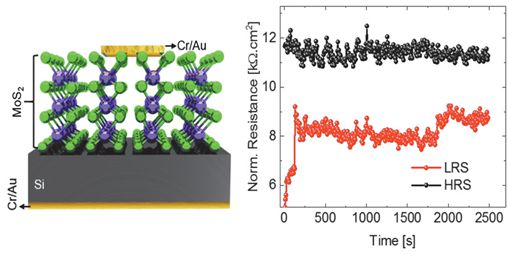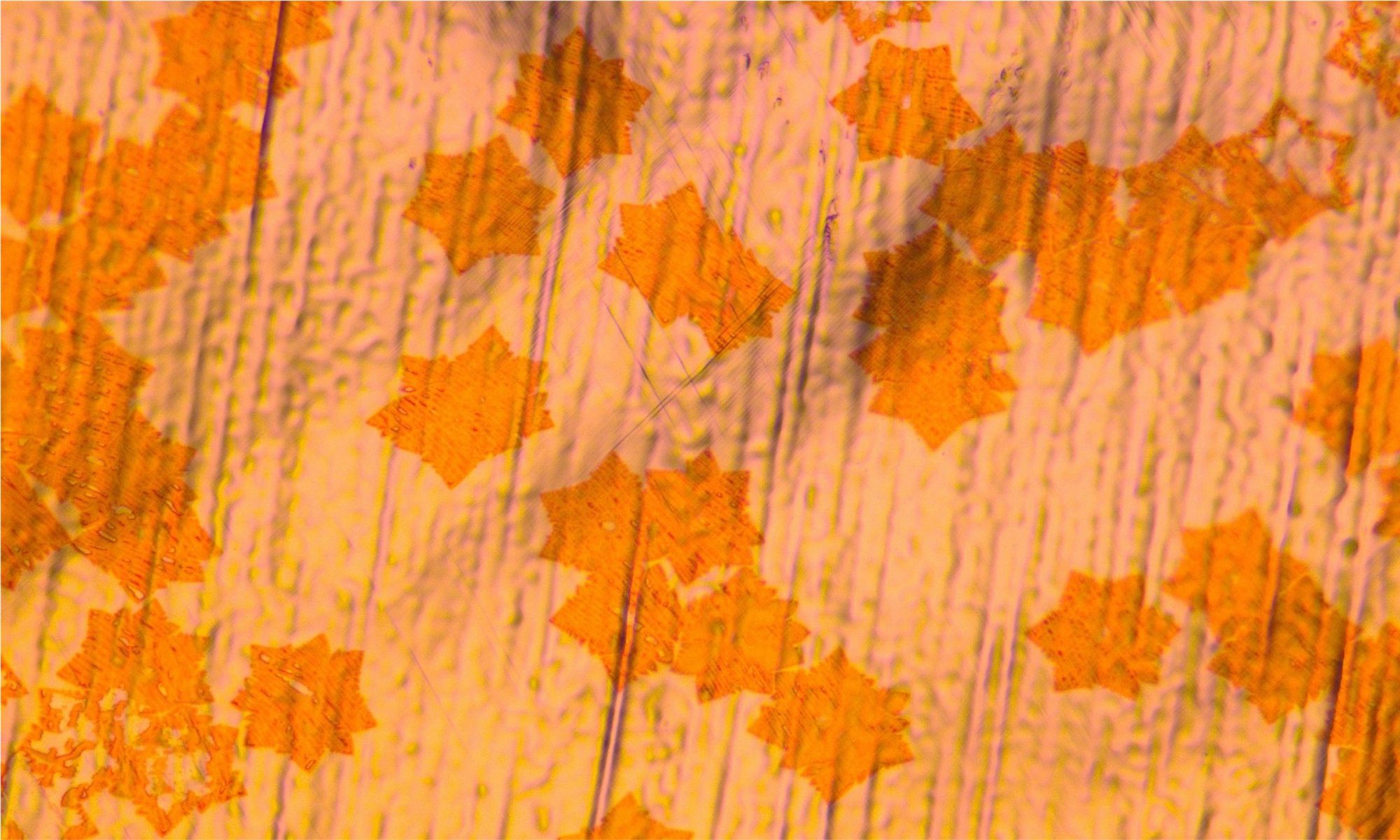Melkamu Belete and colleagues at ELD, AMO and Stanford University have demonstrated non-volatile resistive switching in memristors with vertically aligned 2D layers of molybdenum disulfide (MoS2) as active material.
The resistive switching of these devices (RS) exhibits stable state‐retention for at least 2500 s and endurance for at least 140 manual DC switching cycles. Controlled experiments and analytical simulations indicate that the observed RS behavior is based on mobile hydroxyl ions originating from catalytic splitting of adsorbed water molecules in MoS2.

The fabrication process employed in this work is scalable and compatible with existing semiconductor technology. Hence, it paves the way for integration of novel 2D materials-based memristors into the conventional Si platform for potential neuromorphic computing applications.
This work has been published on Advanced Electronic Materials.
